Dhaka, an inequal city

The uprising was quick. Starting from a rather simple demand by students, it turned to a larger movement in which people beyond universities, including workers and common people, joined the fray. In a month, it acquired a political and social cry about justice and fairness, and an opposition to the authoritarian establishment. In ensuing riots, students and the police faced off each other in violent confrontations on the streets of the city. One particularly violent night, 600 people were wounded and 422 detained. Tainted by accusations of heavy-handed treatment of the protests, the head of the government left the country.
The above scenario—perhaps too near and familiar at this time—describes the famous May uprising of Paris in 1968. The New York Times, in a 2018 feature on the Paris events, described it as a month of revolution that propelled students to confront capitalism, war and authority. It also pushed France into the modern world. Soon, France returned to being normal, and the indomitable leader who had left, Charles de Gaulle, was removed in a year. "Today it is hard to imagine," the Times writes, "a Western country completely engulfed by a social upheaval, but that is what happened in May 1968 in France." The youth rage that roiled Paris in 1968 was worldwide, from anti-Vietnam war protests in the US to the anti-dictator movement in then Pakistan (that eventually ousted Ayub Khan).
Revolutions have evolutions. While the confrontational part dwindled, the Paris uprising engaged major French thinkers like Jean-Paul Sartre, Michel de Certeau, Guy Debord, Henre Lefebvre, and many others. Their work, then and after, became an intellectual guide for rethinking critical aspects of society in which the city was a key theme. De Certeau famously wrote about the "everyday" which was, until then, hardly the focus of an intellectual inquiry. Going beyond spectacles of popular culture or hegemonic constructs by political regimes, he brought focus to how individuals navigate the everyday, from life in the street to life mediated by the state.
Debord's book Society of the Spectacle, published a year before the rebellion, was a damning critique of consumerist capitalism and mass production, and its techniques of spectacularity, in which the lived life (the "real" life), he argued, has become a prisoner of representations and images. Student protesters used extracts from Debord's writings as slogans and inspiration during the movement. Perhaps the most powerful thinking emerged from the sociologist Henre Lefebvre, whose tracts, translated as "Right to the City" and "Urban Revolution," had a huge impact on thinking about spatial occupation in the city.
Revolutions have evolutions. The movement that ousted the Sheikh Hasina government found its clarity, not before or during, but in the aftermath: what began as a demand for equity in government job quotas has now become generally accepted as a call for social and institutional reforms. It is, and will remain, a work in progress.
How people move in the city is another barometer of fairness. In the transport sector, the free movement of singular, individual vehicles has always been privileged. Flyovers and elevated roads were the priority in allocating resources, while mass transit systems lagged behind. When it came, it was late. There should be more and vigorous resources for MRTs and other mass transit systems, such as BRTs, light rail, etc, over road infrastructure.
At this juncture, some friends and colleagues have asked me to write on the state of architecture and the city. I was not convinced that this is a proper time to write about such a topic when the new government is busy tackling more critical issues around beleaguered normalcy, security and economy. And yet, I thought, if an outrage over disparity is the key theme of the movement, it's not far-fetched to see it in a glaring display in the spaces of the city.
In Lefebvre's rethinking of the city, it is a site for social justice, or lack of it. In his now famous tract "Right to the City," Lefebvre describes how the threads of the neoliberal-commercial state set-up dictates and controls the uses and values of the spaces of the city. The end result is an increasing disenfranchisement of the citizens. In the context of Dhaka, such a condition would mean how the spaces of the city, most particularly public and semi-public spaces, have been co-opted into commercial, exclusive or privatised enterprises. The outcome is the shrinkage of the public realm and alienation of citizens from their own spaces, an increasing marginalisation of the marginals, and the surrender of the state to a unilateral monetisation of land.
A counter-trope to that unilateralism, Lefebvre's Right to the City included the right to inhabit the city, and the right to participate in the making of the city. American sociologist Edward Soja's notion of "spatial justice" is appropriate here, which is "the fair and equitable distribution in space of socially valued resources and opportunities to use them."
Consider three areas in gauging spatial justice in the context of Dhaka: housing, urban movement, and public spaces.
In the spectacular urban transformation of Dhaka—the elevated expressways, the MRTs, the dazzling buildings, planned residential areas, roads 100 to 300 feet wide—what is flagrantly missing is housing, that is, shelter for people. It is very clear that we have done poorly in providing basic shelter to a large swath of people who actually need it. It is shocking that in a megapolis like Dhaka, there is no example of public, social or affordable housing whether through state or private initiatives.
Housing is poorly defined in our conversations. There is little discourse on the idea that housing is a social enterprise that works beyond provision of shelters. The goal of housing—creating social relations and a quality of life—works across all economic classes, and that the city and the state have an obligation to pursue that. It is no wonder that a vast population of Dhaka are generally disgruntled with where they are.
Oftentimes, what is touted as housing in Dhaka are apartment buildings on individual plots for the middle and upper middle classes—primarily ventures in real-estate speculation and profit-making. While such enterprises have been broadly sponsored by the state, through land preparedness, constructing infrastructure and utilities, and providing banking support, the lower- and limited-income groups have been completely ignored. And on top of that, the wanton ravaging of precious lands in Dhaka have been conducted in the name of such profiteering enterprise. Entire ecologically precious zones have been pillaged to plan "residential areas."
How people move in the city is another barometer of fairness. In the transport sector, the free movement of singular, individual vehicles has always been privileged. Flyovers and elevated roads were the priority in allocating resources, while mass transit systems lagged behind. When it came, it was late. There should be more and vigorous resources for MRTs and other mass transit systems, such as BRTs, light rail, etc, over road infrastructure.
A city like Dhaka cannot remain hostage to a primitive bus system managed in a helter-skelter manner. Dhaka needs a master plan for bus routes with quality vehicles. There should be other smaller modules of mass transit, such as organised smaller vehicles serving secondary or neighbourhood roads and connecting to MRT/BRT stations. With Dhaka's natural waterways, as we have decried for a long time, why can we not have a robust water-based transportation?
With the MRT's arrival, there should be a walkability master plan for the city. How else will people avail the transit system? Consider the pedestrian aspect of the footpath: the domain of poor pedestrians, who constitute more than 40 percent of the people on the move in the city. In that case, we should have proper, wider and more decent footpaths, but no! Footpaths are chipped off to make wider roads, and whatever remains as a footpath is often a farce in walkability. No wonder people walk on roads rather than on footpaths!
While the images of rowdyism inside the Parliament Building in the afternoon of August 5 was a depressing sight, the assembly of thousands of people reclaiming the South Plaza for the purpose Louis Kahn intended—as a public space—was heartening. We have lamented how the public realm in the city is decreasing, even those assigned through intent and design. The lack of public spaces is the third issue of spatial justice in Dhaka.
In a city of around 22 million, there are few designated public spaces; there are no charters for safeguarding them as we have for a forest preserve, for example. Ambiguity prevails in giving definitions to public spaces: we know that Shahbag Chattar is not a chattar at all—it is a road intersection. Construction of new parks all over Dhaka has only yielded fenced-off areas. Parks, fields, lakesides, and canals have been appropriated and privatised. Riverbanks, which are natural ecological assets as well as a natural public realm, have been increasingly occupied by a state-private nexus.
Spatial equity, in this context, would mean the reclamation of riverbanks and all such public spaces, and their release to an occupation by the people. It would also mean a cataloguing of all public spaces in the city—fields, sidewalks, grounds, greens, ponds, leftover spaces, under-the-highway spaces—and creating a strict protocol for their preservation, and at the same time discovering new spaces and applying appropriate design to uplift them for access and use by all.
Revolutions have evolutions. Let us hope that they are for a public good.
Kazi Khaleed Ashraf is an architect and writer, and directs the Bengal Institute for Architecture, Landscapes and Settlements.
Views expressed in this article are the author's own.
Follow The Daily Star Opinion on Facebook for the latest opinions, commentaries and analyses by experts and professionals. To contribute your article or letter to The Daily Star Opinion, see our guidelines for submission.

 For all latest news, follow The Daily Star's Google News channel.
For all latest news, follow The Daily Star's Google News channel. 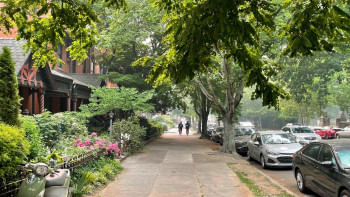
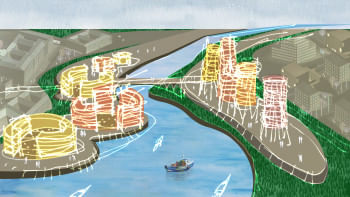
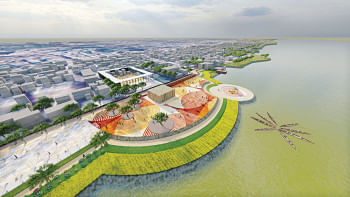


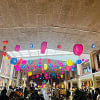
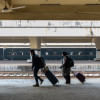
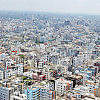




Comments